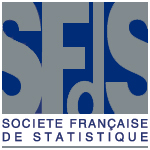Latent Gaussian modeling and INLA: A review with focus on space-time applications
Résumé
Bayesian hierarchical models with latent Gaussian layers have proven very flexible in capturing complex stochastic behavior and hierarchical structures in high-dimensional spatial and spatio-temporal data. Whereas simulation-based Bayesian inference through Markov Chain Monte Carlo may be hampered by slow convergence and numerical instabilities, the inferential framework of Integrated Nested Laplace Approximation (INLA) is capable to provide accurate and relatively fast analytical approximations to posterior quantities of interest. It heavily relies on the use of Gauss–Markov dependence structures to avoid the numerical bottleneck of high-dimensional nonsparse matrix computations. With a view towards space-time applications, we here review the principal theoretical concepts, model classes and inference tools within the INLA framework. Important elements to construct space-time models are certain spatial Mat´ern-like Gauss–Markov random fields, obtained as approximate solutions to a stochastic partial differential equation. Efficient implementation of statistical inference tools for a large variety of models is available through the INLA package of the R software. To showcase the practical use of R-INLA and to illustrate its principal commands and syntax, a comprehensive simulation experiment is presented using simulated non Gaussian space-time count data with a first-order autoregressive dependence structure in time.Téléchargements
Publié-e
2017-10-13
Numéro
Rubrique
Numéro spécial : Statistique pour les données spatiales et spatio-temporelles et réseau RESSTE

